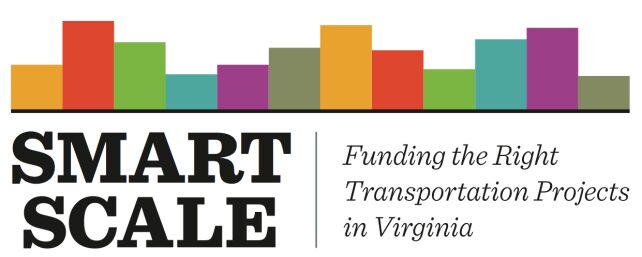The Virginia Secretary of Transportation directed the Office of Intermodal Planning and Investment (OIPI) to conduct a full review of the SMART SCALE process in collaboration with the Virginia Department of Transportation (VDOT) and the Department of Rail and Public Transportation (DRPT). VACo was invited and will participate on the Technical Advisory Committee as part of the program review and is honored to do so. The review has been underway since April of this year and as we head into the fall, almost all the proposed changes to the SMART SCALE program have been unveiled. This article will outline the proposed changes to the SMART SCALE program as the Commonwealth Transportation Board (CTB), VDOT, OIPI, DRPT, the applicant community and stakeholders are discussing and evaluating how these possible changes will impact them.
Small Project Preference
To address concerns that the High Priority Program (HPP) is being used to implement small projects (< $10 million) that do not have meaningful impacts on the improvement of Corridors of Statewide Significance or Regional Networks, the Commonwealth Transportation Board is considering changing the process for how HPP funding is allocated as well as redefining what projects are eligible for HPP funding.
The current funding steps are as follows:
- Step 1 allocates each VDOT construction district’s grant program funding on a district-wide basis.
- Step 2 allocates HPP funding on a district-wide basis
- Step 3 allocates HPP funding on a statewide basis.
The proposed change would eliminate the current Step 2 and would move straight from Step 1 to Step 3 (sorted by SMART SCALE Score) shown above.
Current projects that are eligible for HPP funding include those that address needs on a Corridor of Statewide Significance or a Regional Network. With the proposed changes, project types would be limited to :
- New Capacity Highway
- Managed Lanes
- New or Improved Interchanges
- New or Improved Passenger Rail Stations or Service
- Freight Rail Improvements
- Fixed Guideway Transit
Application Quality and Project Readiness
One of the proposed changes to SMART SCALE is reducing the application caps for all entities; this change responds to a concern expressed regarding application quality. The proposed reduction is as follows:
- Tier 1 entities (localities with less than 200k people and MPOs PDCs or Transit Agencies with less than 500k people) – from 4 applications to 2 applications.
- Tier 2 entities (localities with more than 200k people and MPOs PDCs or Transit Agencies with more than 500k people) from 10 applications to 5 applications
To address project cost overruns and scheduling delays for locally administered projects that have received funding through SMART SCALE, the CTB is considering tying project funding decisions to how well the applying entity performs in project delivery. More information regarding this topic will be presented at the September CTB meeting.
To address project readiness, the CTB is considering an approach to streamline document approval before final submission. This entails making sure an applicant has approval for high level documents (cost estimates, reports, project schedules, resolutions, other required attachments) before a project is submitted. VDOT plans to provide earlier and more targeted support to applicants to coincide with the reduction in applications.
Forward-Looking Process
To better capture the future impacts of project implementation on congestion impacts, the Commonwealth Transportation Board is considering using 10-year future growth to determine congestion benefit scores instead of current congestion conditions. This is how the congestion factor was calculated in SMART SCALE Rounds 1 & 2 and was modified in Round 3 to prioritize existing conditions.
The economic development factor measures how each project supports economic development and improves goods movement. There are concerns that, as currently constructed, this factor does not account for future economic development. VDOT has engaged VEDP to develop a more forward-looking methodology which will be discussed at the September meeting.
Land Use Factor Change
Concerns raised about the current use of the land use score is that it accounts for where a project is located, not expected project outcomes. There is also concern that the land use score has disproportionately driven the types of projects that are selected for funding. To address these concerns, the CTB is considering a change to eliminate land use as a standalone score. Instead, the Commonwealth Transportation Board is considering using the land use scoring factor as a multiplier. The calculated land use benefit would be converted to a multiplier and would be used to increase benefit points in other factor areas thus enhancing the overall project score.
With the proposed removal of the land use factor and conversion to a multiplier, the CTB is considering reapportioning the points from the land use factor to the safety and congestion factors. This means that the CTB and SMART SCALE will continue to use the land use factor to encourage land use and transportation coordination, but a greater emphasis will be placed on safety and congestion factors.
Final findings and recommendations of the proposed changes will be presented during the October meeting of the Commonwealth Transportation Board for the Board’s consideration. Policy adoptions and other recommendations will take place at the December CTB meeting. VACo is soliciting feedback from members on these proposed changes and wants to hear how they could affect the transportation priorities in your localities.
VACo Contact: James Hutzler

